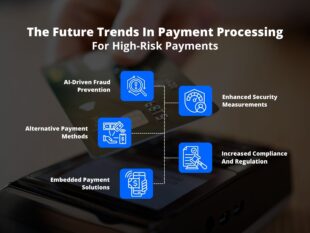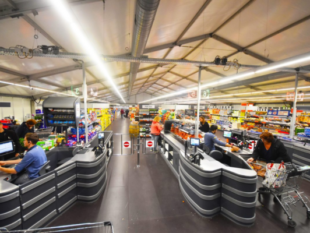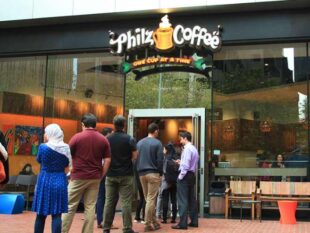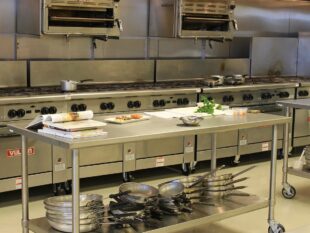How To Adapt Your Food Business To Changing Consumer Trends
by Soumava Goswami Business 30 June 2025

The food business is constantly changing, and the firms that do not change with the times can be left at the starting point.
With changes in diet, the arrival of automation, and concerns over sustainability, food businesses must be up to date with regards to trends if they are to continue making profits.
But how do you stay up-to-date with rapidly changing consumer needs without compromising on efficiency and quality?
The most important thing is to be proactive. Rather than waiting for trends to strike your sales, anticipate them and adjust accordingly. Discover how to future-proof your food business through the use of technology, sustainability, and changing consumer behaviors.
Focusing On Sustainability And Green Practices
Begin by thinking about where you can make the greatest difference. Do you source locally for your ingredients? Are there places where you can conserve food waste by re-purposing ingredients in different ways?
Restaurants and grocery stores that voluntarily announce their efforts at being green have greater customer loyalty.
One simple solution to decrease waste is by implementing smart inventory management systems that monitor expiration dates and adjust orders.
Another suggestion is to compost spoiled food or donate excess meals to local shelters—this decreases waste as well as creates a good reputation for your brand.
One food court recently implemented a ‘bring your own container’ campaign, offering discounts to consumers for minimizing single-use packaging. The campaign was a success, creating repeat trade and saving costs on packaging.
Welcoming Automation Without Sacrificing The Human Touch
Automation is no longer an illusion: it’s real, and it’s transforming the operations of food companies. But automation does not equate to replacing humans—it equals smarter working.
One of the most practical food business investments today is probably an Automatic Deep Fryer. These intelligent fryers minimize human error, enhance consistency in food, and considerably save on oil usage, making them both cost-effective and eco-friendly.
In contrast to conventional fryers, they automatically heat and cook, delivering optimum crispiness each time.
This translates to faster wait times, more efficiency, and fewer customer complaints over soggy or overcooked food.
The Emergence Of Speed And Conveniences
Today’s consumers look for quick, convenient food without sacrificing quality. This is particularly so in city centers where individuals are continuously moving around.
Pre-cooked meal solutions are one of the answers to the call.
Grocery stores and supermarkets have already taken advantage of this trend by selling fresh, ready-to-consume meals that are healthier than usual takeaway options.
The other tactic is to streamline your ordering process. Mobile order apps, self-service kiosks, and QR menus are the wave of the future. The quicker and more streamlined the experience, the higher the chance of repeat visits.
Capitalizing On Data To Forecast Trends Before They Occur
Data analytics can help identify what customers are buying, what products are lagging behind, and what adjustments would enhance sales.
For instance, if you see repeat weekend demand for vegan dishes, you can offer short-term vegan specials to gauge appetite before embarking on menu changes over the longer term.
Your food-buying history, measured by tracking through loyalty programmes, can also be informative.
With an understanding of what your return visitors enjoy, you can tailor promotion and menu suggestions to serve them better, building engagement and revenue
Health-Conscious Consumers: A Shift In Eating Patterns
Health trends are shifting fast, and consumers are becoming increasingly and increasingly picky about what they put on their plates.
Plant-based alternatives, protein-rich meals, or low-carb diets – having a menu that accommodates a variety of dietary needs can be the difference maker.
Rather than a complete menu revamp, begin with incremental, tactical modifications. For instance:
- Add plant-based dishes to your menu in addition to the familiar standbys.
- Cook with healthier alternatives, such as air frying or steaming rather than deep frying.
- Display nutritional information on your menu so customers can make informed decisions.
Providing healthier alternatives is not only about tapping specialty markets but about positioning your firm as progressive and receptive.
Building A Lasting Experience, Not Only A Meal
Shoppers today don’t just need excellent food—they need an excellent experience. If you have a takeaway or delivery business, think about how packaging and branding add up to the overall experience.
Attractive, high-quality packaging can make a huge difference in terms of how customers feel and on social media shareability.
An interactive dining experience is one of the trends that is happening in Australia. From letting customers order food according to their choice to live cooking areas, this can be anything.
Even the food retailers are not behind; they are coming up with ideas like in-store chef demonstrations and tasting events to increase customer engagement.
Extend Your Revenue Streams: Think Beyond Your Main Offerings
Dependence on dine-in or takeaway only can restrict your profitability. Most food ventures are broadening their revenue streams by selling:
- Retail Products – Packaged sauces, spice mixtures, or meal kits in pre-packs.
- Subscription Services – Meal kits on a weekly basis to busy families or health-conscious consumers.
- Cooking Classes & Events – Grocery stores and specialty food establishments can offer cooking classes within their lines.
Be Flexible And Future-Proof Your Business
Changing consumer trends are not about following fads—they are about recognizing long-term trends and incorporating them into your business strategy.
Whether you’re investing in automation like an Automatic Deep Fryer, embracing sustainability, or diversifying your menu, the key is to remain flexible and willing to evolve.
The food industry will keep evolving, but companies that listen to their customers, utilize technology, and emphasize quality will always emerge on top.
Be innovative, be forward-thinking, and make your food business a success in the years to come.
Read Also:



































































































